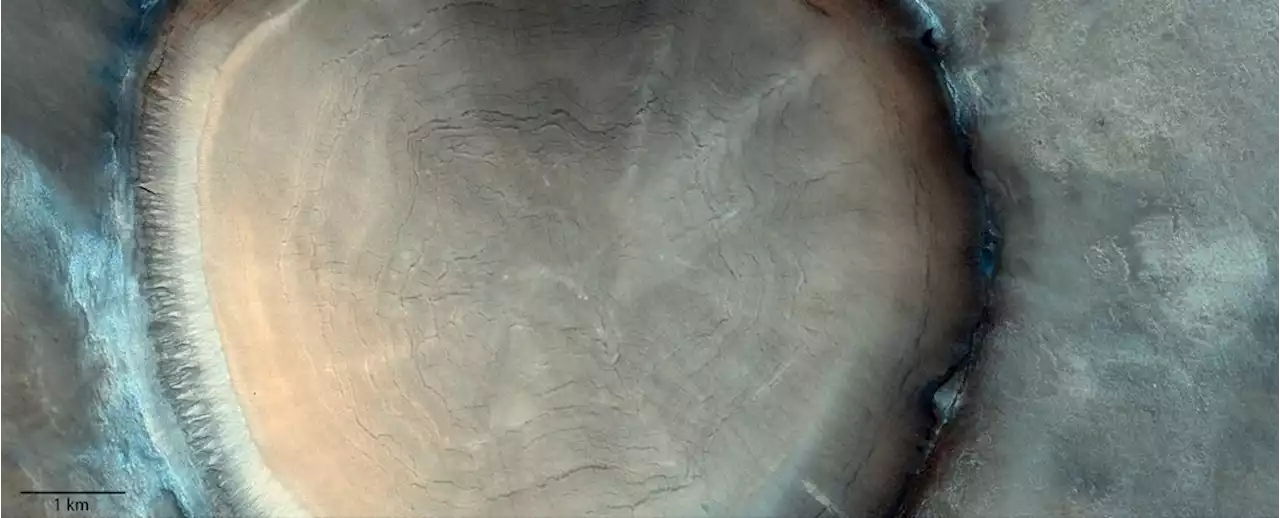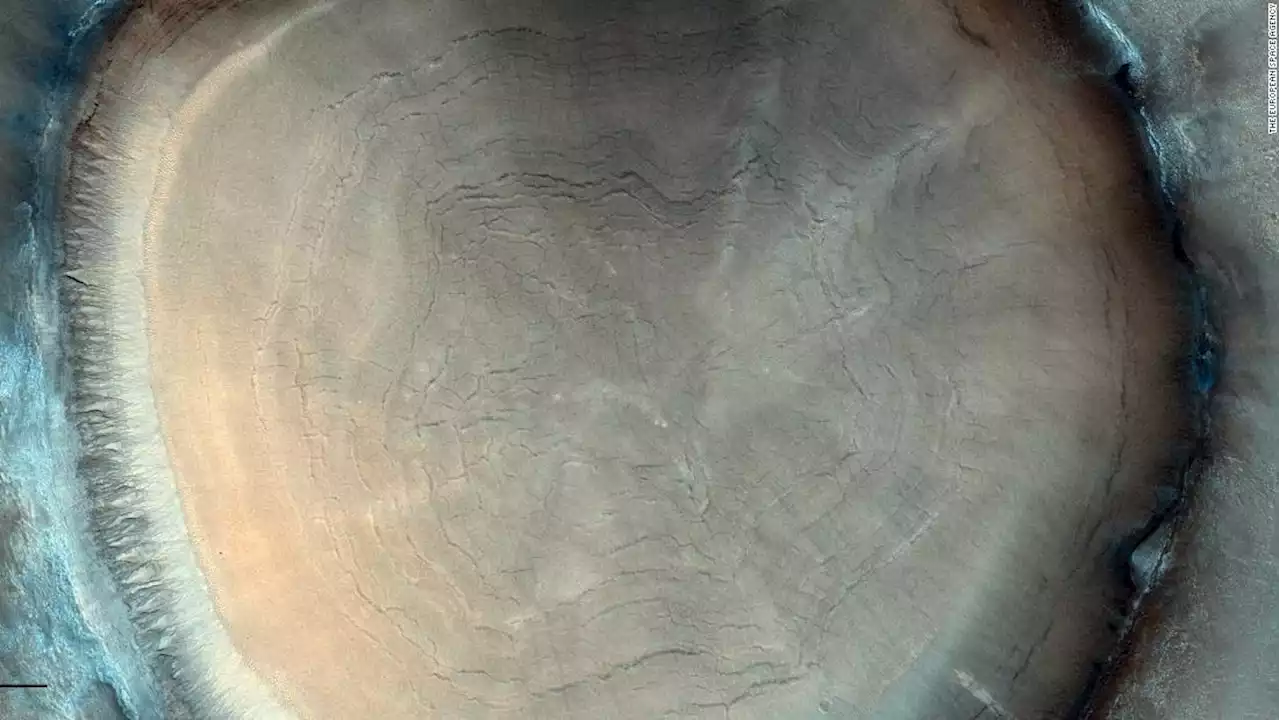A Martian crater that looks a lot like a tree stump from above is shedding light on the history of the red planet.
Sign up for CNN's Wonder Theory science newsletter. Explore the universe with news on fascinating discoveries, scientific advancements and more. At first glance, it looks like a tree stump but the circular feature in a newly released image captured by the ExoMars orbiter is actually an ice-rich crater on Mars.
Just as a tree's concentric rings can give us detailed information about Earth's past climate, the patterns inside the crater illuminate the history of the red planet, according to the European Space Agency . The image was taken last year by the camera on board the ExoMars Trace Gas Orbiter, a spacecraft launched by ESA and Roscosmos, Russia's space agency, that arrived at Mars in 2016 and began its mission in 2018.
United States Latest News, United States Headlines
Similar News:You can also read news stories similar to this one that we have collected from other news sources.
 This Stupendous Crater on Mars Looks Eerily Like a Tree StumpYou might be forgiven for thinking the above picture is the stump of a tree. Shift your perspective a little, however, and the truth becomes clear: What you're looking at is much bigger than any tree – a concave depression on the surface of Mars, g
This Stupendous Crater on Mars Looks Eerily Like a Tree StumpYou might be forgiven for thinking the above picture is the stump of a tree. Shift your perspective a little, however, and the truth becomes clear: What you're looking at is much bigger than any tree – a concave depression on the surface of Mars, g
Read more »
 What NFL Players Have Won the Most Super Bowl Rings?There have been many Super Bowl champions, but who has most rings? Heres which players have won the most in NFL history, including Tom Brady.
What NFL Players Have Won the Most Super Bowl Rings?There have been many Super Bowl champions, but who has most rings? Heres which players have won the most in NFL history, including Tom Brady.
Read more »
 Tom Brady Is Retiring After 22 NFL Seasons, 7 Super Bowl Rings, Reports SayTom Brady won seven Super Bowls, broke passing records and gave the illusion he could play forever. Now the legendary quarterback appears set to say it is over.
Tom Brady Is Retiring After 22 NFL Seasons, 7 Super Bowl Rings, Reports SayTom Brady won seven Super Bowls, broke passing records and gave the illusion he could play forever. Now the legendary quarterback appears set to say it is over.
Read more »
 Lord of the Rings actor Pete Smith dies following kidney disease battleMāori actor Pete Smith has died at the age of 63, his son has shared
Lord of the Rings actor Pete Smith dies following kidney disease battleMāori actor Pete Smith has died at the age of 63, his son has shared
Read more »
What is the Temperature of Mars?The temperature on Mars is relatively low, averaging about minus 80 degrees Fahrenheit (minus 60 degrees Celsius).
Read more »
